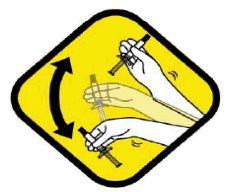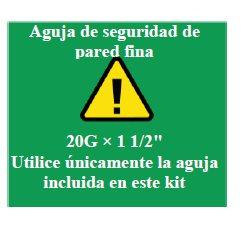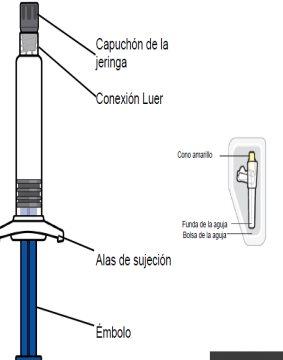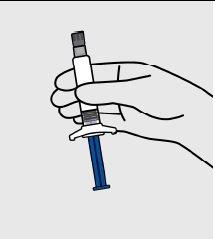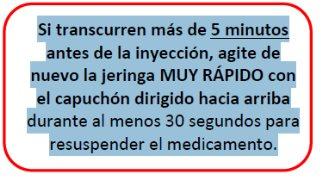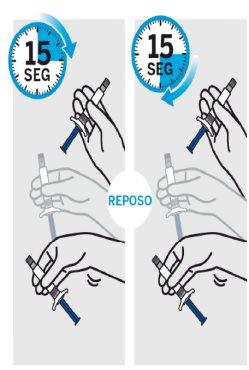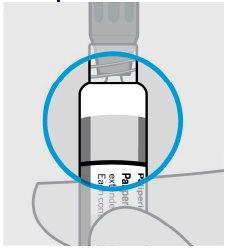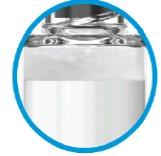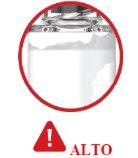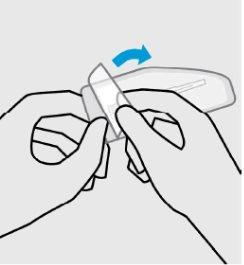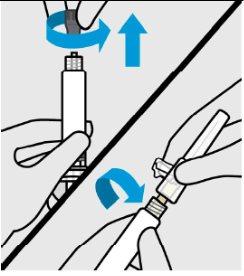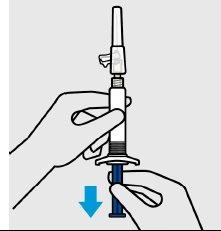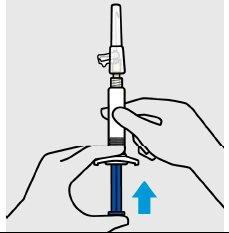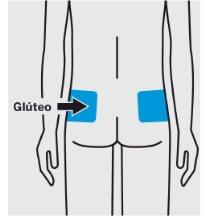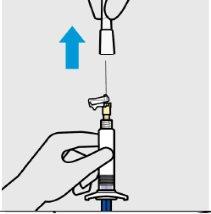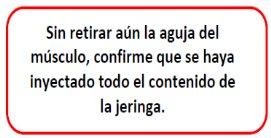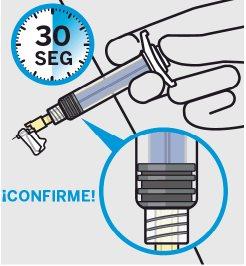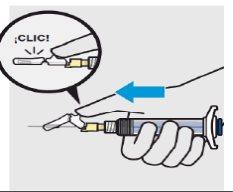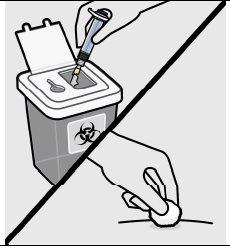
BYANNLI 1.000 MG PROLONGED-RELEASE INJECTABLE SUSPENSION IN PRE-FILLED SYRINGE
Ask a doctor about a prescription for BYANNLI 1.000 MG PROLONGED-RELEASE INJECTABLE SUSPENSION IN PRE-FILLED SYRINGE

How to use BYANNLI 1.000 MG PROLONGED-RELEASE INJECTABLE SUSPENSION IN PRE-FILLED SYRINGE
Introduction
Package Leaflet: Information for the User
BYANNLI 700 mg prolonged-release injectable suspension in a pre-filled syringe
BYANNLI 1,000 mg prolonged-release injectable suspensionin a pre-filled syringe
paliperidone
Read the entire package leaflet carefully before starting to use this medication, as it contains important information for you.
- Keep this package leaflet, as you may need to read it again.
- If you have any questions, consult your doctor, pharmacist, or nurse.
- If you experience side effects, consult your doctor, pharmacist, or nurse, even if they are not listed in this package leaflet. See section 4.
Contents of the Package Leaflet
- What is BYANNLI and what is it used for
- What you need to know before starting to use BYANNLI
- How to use BYANNLI
- Possible side effects
- Storage of BYANNLI
- Package Contents and Additional Information
1. What is BYANNLI and what is it used for
BYANNLI contains the active substance paliperidone, which belongs to the class of antipsychotic medications.
BYANNLI is used as maintenance treatment to combat the symptoms of schizophrenia in adult patients.
If you have responded well to treatment with paliperidone palmitate injection administered monthly or quarterly, your doctor may initiate treatment with BYANNLI.
Schizophrenia is a disease with "positive" and "negative" symptoms. Positive means an excess of symptoms that are not normally present. For example, a person with schizophrenia may hear voices or see things that do not exist (called hallucinations), have false beliefs (called delusions), or have excessive distrust of others. Negative refers to the lack of behaviors or feelings that are normally present. For example, a person with schizophrenia may withdraw into themselves and not respond to any emotional stimuli or may have problems speaking clearly and logically. People with this disorder may also feel depressed, anxious, guilty, or tense.
BYANNLI can alleviate the symptoms of your illness and reduce the likelihood of them returning.
2. What you need to know before starting to use BYANNLI
Do not use BYANNLI
- If you are allergic to paliperidone or any of the other components of this medication (listed in section 6).
- If you are allergic to risperidone.
Warnings and Precautions
Consult your doctor, pharmacist, or nurse before starting to use BYANNLI.
This medication has not been studied in elderly patients with dementia. However, elderly patients with dementia who are being treated with similar medications may have an increased risk of stroke or death (see section 4).
All medications have side effects, and some of the side effects of this medication may worsen the symptoms of other conditions. For this reason, it is essential that you discuss with your doctor any of the following conditions that may worsen during treatment with this medication:
- if you have Parkinson's disease
- if you have a type of dementia called "dementia with Lewy bodies"
- if you have been diagnosed with a disease whose symptoms include elevated temperature and muscle rigidity (known as Neuroleptic Malignant Syndrome)
- if you have had spasms or uncontrolled movements in the face, tongue, or other parts of the body (tardive dyskinesia)
- if you have had low white blood cell counts in the past (which may have been caused by other medications or not)
- if you are diabetic or have a tendency to diabetes
- if you have had breast cancer or a tumor in the pituitary gland (a gland in the brain)
- if you have heart disease or are receiving treatment for heart diseases that may make you more prone to a decrease in blood pressure
- if you have low blood pressure when standing up or sitting up suddenly
- if you have a history of seizures
- if you have kidney problems
- if you have liver problems
- if you have a prolonged and/or painful erection
- if you have difficulty controlling body temperature or experience excessive overheating
- if you have an abnormally high blood level of the hormone prolactin or if you have a possible prolactin-dependent tumor
- if you or a family member have a history of blood clots, as antipsychotics have been associated with the formation of clots.
If you are in any of these situations, talk to your doctor, as it may be necessary to adjust the dose or monitor your condition for some time.
Given that, rarely, a dangerously low number of a certain type of white blood cell responsible for fighting infections in the blood has been observed in patients receiving this medication, it is possible that the doctor may decide to perform white blood cell counts.
Even if you have previously tolerated oral paliperidone or risperidone, allergic reactions may rarely occur after receiving BYANNLI injections. Seek immediate medical attention if you experience a skin rash, throat swelling, itching, or breathing problems, as these may be signs of a severe allergic reaction.
This medication may cause weight gain or loss. Significant weight changes could be harmful to your health. Your doctor will regularly monitor your body weight.
Since diabetes mellitus or worsening of pre-existing diabetes mellitus has been observed in some patients using this medication, your doctor should monitor for possible signs of hyperglycemia. In patients with pre-existing diabetes mellitus, blood glucose levels should be regularly monitored.
Since this medication can reduce the vomiting reflex, there is a possibility that it may mask the body's normal response to the ingestion of toxic substances or other diseases.
Cataract Surgery
If you are considering eye surgery, inform your ophthalmologist that you are using this medication, as during cataract surgery in the eye due to lens clouding:
- the pupil (the black circle in the center of the eye) may not increase in size as needed
- the iris (the colored part of the eye) may become flaccid during surgery and this can cause damage to the eye.
Children and Adolescents
Do not use this medication in children and adolescents under 18 years of age. Its safety and efficacy in these patients are unknown.
Other Medications and BYANNLI
Inform your doctor if you are taking, have recently taken, or may need to take any other medication.
If you take this medication with carbamazepine (an antiepileptic and mood stabilizer), you may need to adjust the dose of this medication.
Since this medication acts primarily on the brain, the use of other medications with brain action may exaggerate side effects such as drowsiness or other effects on the brain, as well as other psychiatric medications, opioids, antihistamines, and sleep medications.
Inform your doctor if you take this medication and are also taking oral risperidone or paliperidone for extended periods. You may need to change your BYANNLI dose.
Since this medication can decrease blood pressure, caution should be exercised when combining it with other medications that lower blood pressure.
This medication may reduce the effect of medications used for Parkinson's disease and restless legs syndrome (e.g., levodopa).
This medication may cause an abnormality in the electrocardiogram (ECG) that indicates that electrical impulses are delayed in reaching a specific part of the heart (known as "prolongation of the QT interval"). Among the medications that have this effect are some medications used to regulate heart rhythm or treat infections, as well as other antipsychotics.
If you have a history of seizures, this medication may increase the likelihood of them returning. Other medications that have this effect include some medications used to treat depression or infections and other antipsychotics.
BYANNLI should be used with caution with medications that increase the activity of the central nervous system (psychostimulants such as methylphenidate).
Using BYANNLI with Alcohol
Alcohol should be avoided.
Pregnancy and Breastfeeding
If you are pregnant or breastfeeding, think you may be pregnant, or plan to become pregnant, consult your doctor or pharmacist before using this medication.
Women of Childbearing Age
A single dose of this medication is expected to remain in the body for up to 4 years, which can be hazardous for your child. Therefore, BYANNLI should only be used in women who plan to have a child if it is clearly necessary.
Pregnancy
Do not use this medication during pregnancy without first discussing it with your doctor. In newborns of mothers who have received paliperidone in the last trimester (the last three months of pregnancy), the following symptoms may appear: tremors, rigidity, and/or muscle weakness, drowsiness, agitation, respiratory disorders, and difficulty feeding. Newborns should be closely monitored, and if your child exhibits any of these symptoms, seek medical attention for your child.
Breastfeeding
This medication may pass from the mother to the child through breast milk. It can be harmful to the child even long after the last dose. For this reason, you should not breastfeed while using or if you have used this medication in the last 4 years.
Driving and Using Machines
During treatment with this medication, dizziness, extreme fatigue, and vision problems (see section 4) may occur. These effects should be taken into account in cases where maximum attention is required, for example, when driving vehicles or operating machinery.
BYANNLI contains Sodium
This medication contains less than 1 mmol of sodium (23 mg) per dose; it is essentially "sodium-free".
3. How to use BYANNLI
This medication is administered by a doctor or healthcare professional. Your doctor will indicate when the next injection should be administered. It is essential that you do not miss the scheduled dose. If you cannot attend your appointment, make sure to call immediately to schedule another appointment as soon as possible.
You will be given a BYANNLI injection in the buttock once every 6 months.
Depending on the symptoms you have, your doctor will increase or decrease the amount of medication to be administered in the next scheduled injection.
Patient with Renal Disorders
If you have mild renal impairment, your doctor will determine if BYANNLI is suitable based on the dose of paliperidone palmitate injectable you have been receiving monthly or quarterly. The 1,000 mg dose of BYANNLI is not recommended.
If you have moderate or severe renal impairment, you should not use this medication.
Elderly Population
If you have decreased renal function, your doctor may adjust the dose of this medication.
If you receive more BYANNLI than you should
This medication will be administered under medical supervision; therefore, it is unlikely that you will receive more than the prescribed amount.
If a patient receives an excessive amount of paliperidone, they may exhibit the following symptoms: drowsiness or sedation, increased heart rate, low blood pressure, alterations in the electrocardiogram (heart electrical recording), or slow and abnormal movements of the face, body, arms, or legs.
If you stop using BYANNLI
If you stop receiving the injections, the symptoms of schizophrenia may worsen. You should not stop using this medication unless your doctor tells you to.
If you have any further questions about the use of this medication, ask your doctor or pharmacist.
4. Possible Adverse Effects
Like all medicines, this medicine can cause adverse effects, although not all people suffer from them.
Severe Adverse Effects
If you experience any of the following severe adverse effects, you may need immediate medical treatment. Inform your doctor or go immediately to the nearest hospital if you present:
- Blood clots in the veins, especially in the legs. This is a rare adverse effect (it can affect up to 1 in 1,000 people). The symptoms include:
- swelling, pain, and redness of the legs (deep vein thrombosis)
- chest pain and difficulty breathing due to blood clots that have reached the lungs through the blood vessels (pulmonary embolism).
- Signs of stroke, whose frequency is unknown (cannot be estimated from the available data). The symptoms include:
- sudden change in your mental state
- weakness or sudden numbness of the face, arms, or legs, especially on one side of the body; or if you have difficulty speaking, even if it's for a short time.
- Malignant neuroleptic syndrome. This is a rare adverse effect (it can affect up to 1 in 1,000 people). The symptoms include:
- fever, muscle stiffness, sweating, or reduced level of consciousness.
- Prolonged erections, which can be painful (priapism). This is a rare adverse effect (it can affect up to 1 in 1,000 people).
- Uncontrollable rhythmic spasmodic movements of the tongue, mouth, face, or other parts of the body (tardive dyskinesia). This is an uncommon adverse effect (it can affect up to 1 in 100 people). It may be necessary to withdraw this medicine.
- Severe allergic reaction (anaphylactic reaction), the frequency is unknown (cannot be estimated from the available data). The symptoms include:
- fever,
- swelling of the mouth, face, lips, or tongue,
- difficulty breathing,
- itching, skin rash, and sometimes a drop in blood pressure.
Even if you have previously tolerated oral risperidone or oral paliperidone, you may rarely experience allergic reactions after receiving paliperidone injections.
- Flaccid iris syndrome, when the iris (the colored part of the eye) becomes flaccid during cataract surgery. This can lead to eye damage (see also "Cataract operations" in section 2). The frequency of this adverse effect is unknown (cannot be estimated from the available data).
- Stevens-Johnson syndrome or toxic epidermal necrolysis. Severe or life-threatening rash with blisters and skin peeling that can start inside and around the mouth, nose, eyes, and genitals and spread to other areas of the body. The frequency of these adverse effects is unknown (cannot be estimated from the available data).
Inform your doctor or go immediately to the nearest hospital if you experience any of the above severe adverse effects.
- Agranulocytosis, a dangerously low number of a type of white blood cell necessary to fight blood infections. The frequency of this adverse effect is unknown (cannot be estimated from the available data).
Other Adverse Effects
Very Common Adverse Effects: can affect more than 1 in 10 people
- difficulty falling asleep or staying asleep.
Common Adverse Effects: can affect up to 1 in 10 people
- common cold symptoms, urinary tract infection, feeling of having the flu.
- BYANNLI may increase the levels of a hormone called "prolactin" that is detected in blood tests (which may cause symptoms or not). When symptoms of increased prolactin appear, they can include: (in men) breast swelling, difficulty having or maintaining erections, or other sexual dysfunctions; (in women) breast discomfort, loss of menstrual periods, or other problems with the menstrual cycle.
- high blood sugar, weight gain, weight loss, decreased appetite.
- irritability, depression, anxiety.
- parkinsonism: this disease can include slow or altered movement, feeling of stiffness or tension in the muscles (making jerky movements) and sometimes a feeling of "freezing" of movement that then restarts. Other signs of parkinsonism include walking slowly, dragging feet, tremors while resting, increased saliva, and/or drooling, and loss of facial expression.
- feeling of restlessness, drowsiness, or reduced alertness.
- dystonia: it is a disorder that involves slow or continuous involuntary muscle contraction. Although any part of the body can be affected (and can cause abnormal postures), dystonia often affects the muscles of the face, including abnormal movements of the eyes, mouth, tongue, or jaw.
- dizziness.
- dyskinesia: this disorder involves involuntary muscle movements and can include
- repetitive, spasmodic, or twisting movements, or spasms.
- tremors (shakiness).
- headache.
- rapid heart rate.
- high blood pressure.
- cough, nasal congestion.
- abdominal pain, vomiting, nausea, constipation, diarrhea, indigestion, toothache.
- increased liver transaminases in the blood.
- bone or muscle pain, back pain, joint pain.
- loss of menstrual periods.
- fever, weakness, fatigue (tiredness).
- reaction at the injection site, with itching, pain, or swelling.
Uncommon Adverse Effects: can affect up to 1 in 100 people
- pneumonia, chest infection (bronchitis), respiratory tract infection, sinusitis, bladder infection, ear infection, tonsillitis, fungal infection of the nails,
skin infections.
- reduction in the number of white blood cells.
- anemia.
- allergic reaction.
- diabetes or worsening of diabetes, increased blood insulin levels (hormone that regulates blood sugar levels).
- increased appetite.
- loss of appetite that leads to malnutrition and weight loss.
- high triglycerides (a type of fat) in the blood, high cholesterol in the blood.
- sleep disorders, euphoria (mania), decreased sexual desire, nervousness, nightmares.
- fainting, urge to move certain parts of the body, dizziness when standing up, attention problems, speech disorders, loss or alteration of the sense of taste, reduced skin sensitivity to pain and touch, feeling of tingling, pinching, or numbness of the skin.
- blurred vision, eye infection, or red eyes, dry eyes.
- feeling that everything is spinning (vertigo), ringing in the ears, ear pain.
- disruption of conduction between the upper and lower parts of the heart, cardiac conduction disorders, prolongation of the QT interval of the heart, accelerated heart rate when standing up, slow heart rate, anomalies in the heart's electrical recording (electrocardiogram or ECG), feeling of palpitations or fluttering in the chest (palpitations).
- low blood pressure, low blood pressure when standing up (due to this effect, some people treated with this medicine may feel weakness, dizziness, or may faint when getting up or sitting down suddenly).
- difficulty breathing, sore throat, nasal bleeding.
- abdominal discomfort, gastric or intestinal infection, difficulty swallowing, dry mouth, excessive gas or flatulence.
- increased GGT (a liver enzyme called gamma-glutamyltransferase) in the blood, increased liver enzymes in the blood.
- appearance of hives (or urticaria), itching, rash, hair loss, eczema, dry skin, skin redness, acne, abscess under the skin, peeling, itching of the scalp or skin.
- increased CPK (creatine phosphokinase), an enzyme in the blood.
- muscle spasms, joint stiffness, muscle weakness.
- incontinence (loss of control) of urine, frequent urination, pain when urinating.
- erectile dysfunction, ejaculation disorders, loss of menstrual periods or alterations of the cycle (in women), breast development in men, sexual dysfunction, breast pain, milk leakage from the breasts.
- swelling of the face, mouth, eyes, or lips, swelling of the body, arms, or legs.
- increased body temperature.
- changes in gait.
- chest pain, chest discomfort, feeling of general discomfort.
- skin hardening.
- falls.
Rare Adverse Effects: can affect up to 1 in 1,000 people
- eye infection.
- skin inflammation caused by mites.
- increased eosinophils (a type of white blood cell) in the blood.
- reduction in platelets (cells necessary to stop bleeding).
- inappropriate secretion of a hormone that controls urine volume.
- presence of sugar in the urine.
- potentially fatal complications of uncontrolled diabetes.
- low blood sugar.
- excessive water intake.
- confusion.
- lack of movement or response while being awake (catatonia).
- sleepwalking.
- lack of emotions.
- inability to reach orgasm.
- lack of response to stimuli, loss of consciousness, decreased level of consciousness, convulsions (epileptic seizures), balance disorder.
- abnormal coordination.
- glaucoma (increased internal eye pressure).
- eye movement disorders, "white eyes", increased sensitivity of the eyes to light, increased tearing, red eyes.
- uncontrollable head shaking.
- atrial fibrillation (a heart rhythm disorder), irregular heartbeats.
- flushing.
- difficulty breathing during sleep (sleep apnea).
- pulmonary congestion, respiratory tract congestion.
- crackling sounds in the lungs.
- wheezing.
- pancreatitis.
- swelling of the tongue.
- incontinence of feces, passage of very hard stools, intestinal obstruction.
- chapped lips.
- drug-related skin rash, skin thickening, dandruff.
- swelling of the joints.
- muscle breakdown ("rhabdomyolysis").
- inability to urinate.
- breast discomfort, breast swelling, increased breast size.
- vaginal discharge.
- very low body temperature, chills, feeling of thirst.
- symptoms of withdrawal from the medicine.
- pus accumulation due to infection at the injection site, infection of the deep layers of the skin, cyst at the injection site, hematoma (bruise) at the injection site.
Frequency Not Known: cannot be estimated from the available data
- ingestion of dangerously excessive amounts of water.
- sleep-related eating disorder.
- diabetic coma
- shallow and agitated breathing, pneumonia caused by aspiration of food, voice disorders
- decrease in oxygen in parts of the body (due to decreased blood flow)
- lack of intestinal movement that causes intestinal obstruction
- yellow color of the skin and eyes (jaundice)
- skin discoloration
- abnormal posture
- newborns whose mother has taken BYANNLI during pregnancy may experience adverse effects from the medicine and/or withdrawal symptoms, such as irritability, slow or sustained muscle contractions, tremors, insomnia, respiratory or feeding problems
- decreased body temperature
- accumulation of dead cells in the skin around the injection site, ulcer at the injection site.
Reporting of Adverse Effects
If you experience any type of adverse effect, consult your doctor, pharmacist, or nurse, even if it is a possible adverse effect that is not listed in this leaflet. You can also report them directly through the national reporting system included in Appendix V. By reporting adverse effects, you can contribute to providing more information on the safety of this medicine.
5. Storage of BYANNLI
Keep this medicine out of the sight and reach of children.
Do not use this medicine after the expiration date that appears on the box. The expiration date is the last day of the month indicated.
Transport and store in a horizontal position. Check the correct orientation with the arrows on the product box.
Medicines should not be thrown down the drain or into the trash. Ask your pharmacist how to dispose of the packaging and medicines that are no longer needed. This will help protect the environment.
6. Container Contents and Additional Information
Composition of BYANNLI
The active ingredient is paliperidone.
Each BYANNLI 700 mg pre-filled syringe contains 1,092 mg of paliperidone palmitate, equivalent to 700 mg of paliperidone.
Each BYANNLI 1,000 mg pre-filled syringe contains 1,560 mg of paliperidone palmitate, equivalent to 1,000 mg of paliperidone.
The other components are:
Polysorbate 20
Polyethylene glycol 4,000
Citric acid monohydrate
Sodium dihydrogen phosphate monohydrate
Sodium hydroxide (for pH adjustment)
Water for injectable preparations
Product Appearance and Container Contents
BYANNLI is a long-acting injectable suspension, white to off-white in color, presented in a pre-filled syringe. The pH is approximately 7.0. The doctor or nurse should shake the syringe rapidly to homogenize the suspension before injecting.
Each container contains 1 pre-filled syringe and 1 needle.
Marketing Authorization Holder
Janssen-Cilag International NV
Turnhoutseweg 30
B-2340 Beerse
Belgium
Manufacturer
Janssen Pharmaceutica NV
Turnhoutseweg 30
B-2340 Beerse
Belgium
You can request more information about this medication by contacting the local representative of the marketing authorization holder.
Belgium/Belgique/Belgien Janssen-Cilag NV Tel/Tél: +32 14 64 94 11 | Lithuania UAB “JOHNSON & JOHNSON” Tel: +370 5 278 68 88 |
Bulgaria “JOHNSON & JOHNSON” EAD Tel: +359 2 489 94 00 | Luxembourg/Luxemburg Janssen-Cilag NV Tél/Tel: +32 14 64 94 11 |
Czech Republic Janssen-Cilag s.r.o. Tel: +420 227 012 227 | Hungary Janssen-Cilag Kft. Tel: +36 1 884 2858 |
Denmark Janssen-Cilag A/S Tlf: +45 4594 8282 | Malta AM MANGION LTD. Tel: +356 2397 6000 |
Germany Janssen-Cilag GmbH Tel: +49 2137 955 955 | Netherlands Janssen-Cilag B.V. Tel: +31 76 711 1111 |
Estonia UAB “JOHNSON & JOHNSON” Eesti filial Tel: +372 617 7410 | Norway Janssen-Cilag AS Tlf: +47 24 12 65 00 |
Greece Janssen-Cilag Φαρμακευτικη Α.Ε.Β.Ε. Tηλ: +30 210 80 90 000 | Austria Janssen-Cilag Pharma GmbH Tel: +43 1 610 300 |
Spain Janssen-Cilag, S.A. Tel: +34 91 722 81 00 | Poland Janssen-Cilag Polska Sp. z o.o. Tel: +48 22 237 60 00 |
France Janssen-Cilag Tél: 0 800 25 50 75 / +33 1 55 00 40 03 | Portugal Janssen-Cilag Farmacêutica, Lda. Tel: +351 214 368 600 |
Croatia Johnson & Johnson S.E. d.o.o. Tel: +385 1 6610 700 | Romania Johnson & Johnson România SRL Tel: +40 21 207 1800 |
Ireland Janssen Sciences Ireland UC Tel: +353 1 800 709 122 | Slovenia Johnson & Johnson d.o.o. Tel: +386 1 401 18 00 |
Iceland Janssen-Cilag AB c/o Vistor hf Tel: +354 535 7000 | Slovak Republic Johnson & Johnson, s.r.o. Tel: +421 232 408 400 |
Italy Janssen-Cilag SpA Tel: 800.688.777 / +39 02 2510 1 | Finland Janssen-Cilag Oy Tel: +358 207 531 300 |
Cyprus Βαρνάβας Χατζηπαναγής Λτδ Tηλ: +357 22 207 700 | Sweden Janssen-Cilag AB Tel: +46 8 626 50 00 |
Latvia UAB “JOHNSON & JOHNSON” filiale Latvija Tel: +371 678 93561 | United Kingdom (Northern Ireland) Janssen Sciences Ireland UC Tel: +44 1 494 567 444 |
Date of Last Revision of this Leaflet:
Detailed information on this medicinal product is available on the European Medicines Agency website: http://www.ema.europa.eu, and on the website of the Spanish Agency for Medicines and Health Products (AEMPS) (http://www.aemps.gob.es/).
Information for Healthcare Professionals
This information is intended solely for healthcare professionals, who should read it in conjunction with the full Summary of Product Characteristics.
Important Safety Information
| Shake the syringe VERY RAPIDLY with the cap pointing upwards for at least 15 seconds, let it rest for a moment, and then shake again for 15 seconds. |
Transportation and Storage
| If the box is transported and stored in a horizontal position, the resuspension of this highly concentrated product will be more efficient. |
Preparation | BYANNLI (long-acting injectable suspension of paliperidone palmitate) requires longer and more rapid shaking than the monthly long-acting injectable suspension of paliperidone palmitate. BYANNLI should be administered by a healthcare professional as a single injection.
BYANNLI is indicated for intramuscular administration in the gluteus only.
|
Dosage | Administer BYANNLI once every 6 months. |
Thin-Walled Safety Needle | It is essential to use only the thin-walled safety needle (1½ inches, 20 gauge, 0.9 mm × 38 mm) included in the kit. It is designed for use exclusively with BYANNLI. |
Container Contents per dose
| Pre-filled Syringe:
|
Thin-Walled Safety Needle |
This highly concentrated product requires specific steps for resuspension. | ||
Always hold the syringe with the cap pointing upwards. |
| |
To ensure complete resuspension, shake the syringe:
Shake the syringe VERY RAPIDLY for at least 15 seconds, let it rest for a moment, and then shake again for 15 seconds.
|
| |
Check for solid product in the suspension
| Well mixed
| Poorly mixed
|
The product may clog.If this happens, shake the syringe VERY RAPIDLY with the cap pointing upwards for at least 15 seconds, let it rest, and then shake again for 15 seconds. | ||
Open the needle bag Remove the cover from the bag. Place the bag with the needle inside on a clean surface. |
| |
Remove the syringe cap and attach the needle
Use only the needle included in this kit. |
| |
|
| |
Remove air bubbles Press the plunger carefully until a drop of liquid comes out of the needle tip. |
|
Select the injection site in the upper outer quadrant of the gluteus and clean the area. Do notadminister the medication by any other route. Rub the injection site with an alcohol swab and let it dry. Do nottouch, fan, or blow on the injection site after cleaning. |
|
Remove the needle sheath Remove the needle sheath by pulling it straight. Do nottwist the sheath, as it may loosen the needle from the syringe. |
|
Inject slowly and confirm Press the plunger slowly, firmly, and constantly to the bottom.This should take about 30-60 seconds. Continue pressing the plunger if you feel resistance. This is normal.
Remove the needle from the muscle. |
|
Protect the needle After injection, use your thumb or a flat surface to activate the needle safety device. The needle will be secure when you hear a “click”. |
|
Dispose of properly and check the injection site Dispose of the syringe in an authorized container for sharp objects. At the injection site, there may be a small amount of blood or liquid. Apply pressure to the skin with a cotton swab or gauze until it stops bleeding. Do notrub the injection site. If necessary, cover the injection site with a bandage. |
|




Select the injection site in the upper outer quadrant of the gluteus and clean the area. Do notadminister the medication by any other route. Rub the injection site with an alcohol swab and let it dry. Do nottouch, fan, or blow on the injection site after cleaning. |
Remove the needle sheath Remove the needle sheath by pulling it straight. Do nottwist the sheath, as it may loosen the needle from the syringe. |
Inject slowly and confirm Press the plunger slowly, firmly, and constantly to the bottom.This should take about 30-60 seconds. Continue pressing the plunger if you feel resistance. This is normal. Without removing the needle from the muscle, confirm that all the contents of the syringe have been injected. Remove the needle from the muscle. |








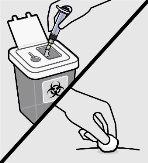
- After injection, protect the needle
After injection, use your thumb or a flat surface to activate the needle safety device.
The needle will be secure when you hear a “click”.
Dispose of properly and check the injection site
Dispose of the syringe in an authorized container for sharp objects.
At the injection site, there may be a small amount of blood or liquid. Apply pressure to the skin with a cotton swab or gauze until it stops bleeding.
Do notrub the injection site.
If necessary, cover the injection site with a bandage.

How much does BYANNLI 1.000 MG PROLONGED-RELEASE INJECTABLE SUSPENSION IN PRE-FILLED SYRINGE cost in Spain ( 2025)?
The average price of BYANNLI 1.000 MG PROLONGED-RELEASE INJECTABLE SUSPENSION IN PRE-FILLED SYRINGE in November, 2025 is around 1507.69 EUR. Prices may vary depending on the region, pharmacy, and whether a prescription is required. Always check with a local pharmacy or online source for the most accurate information.
- Country of registration
- Average pharmacy price1507.69 EUR
- Active substance
- Prescription requiredYes
- Manufacturer
- This information is for reference only and does not constitute medical advice. Always consult a licensed doctor before taking any medication. Oladoctor is not responsible for medical decisions based on this content.
- Alternatives to BYANNLI 1.000 MG PROLONGED-RELEASE INJECTABLE SUSPENSION IN PRE-FILLED SYRINGEDosage form: INJECTABLE, 150 mg + 100 mgActive substance: paliperidoneManufacturer: Teva Pharma S.L.U.Prescription requiredDosage form: INJECTABLE, 50 mgActive substance: paliperidoneManufacturer: Teva Pharma S.L.U.Prescription requiredDosage form: INJECTABLE, 700 mgActive substance: paliperidoneManufacturer: Janssen-Cilag International N.VPrescription required
Alternatives to BYANNLI 1.000 MG PROLONGED-RELEASE INJECTABLE SUSPENSION IN PRE-FILLED SYRINGE in other countries
The best alternatives with the same active ingredient and therapeutic effect.
Alternative to BYANNLI 1.000 MG PROLONGED-RELEASE INJECTABLE SUSPENSION IN PRE-FILLED SYRINGE in Poland
Alternative to BYANNLI 1.000 MG PROLONGED-RELEASE INJECTABLE SUSPENSION IN PRE-FILLED SYRINGE in Ukraine
Online doctors for BYANNLI 1.000 MG PROLONGED-RELEASE INJECTABLE SUSPENSION IN PRE-FILLED SYRINGE
Discuss dosage, side effects, interactions, contraindications, and prescription renewal for BYANNLI 1.000 MG PROLONGED-RELEASE INJECTABLE SUSPENSION IN PRE-FILLED SYRINGE – subject to medical assessment and local rules.




